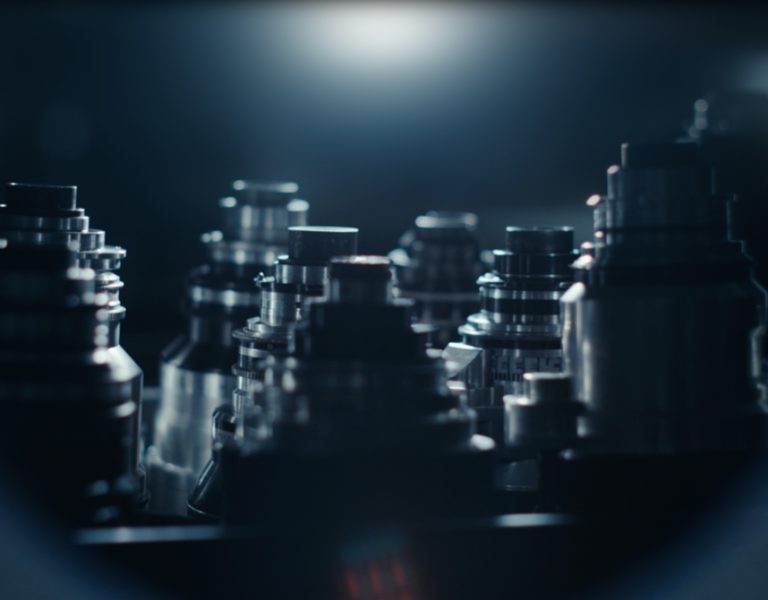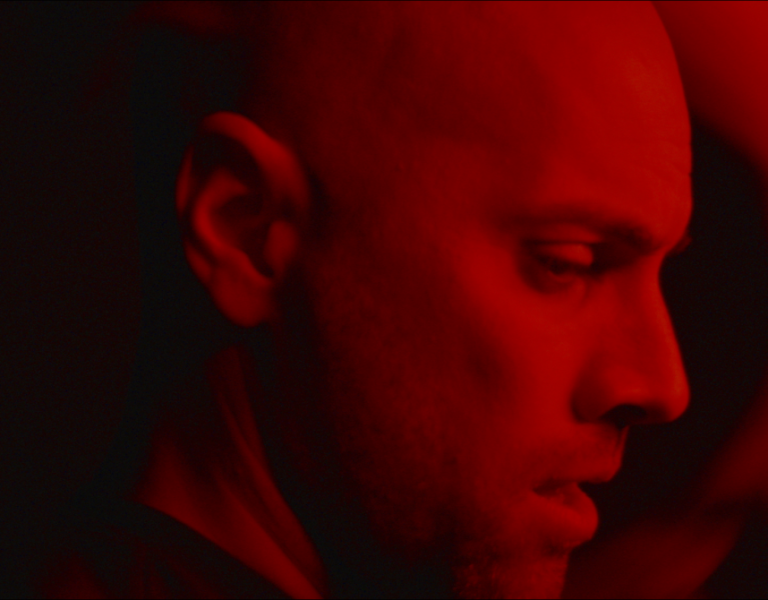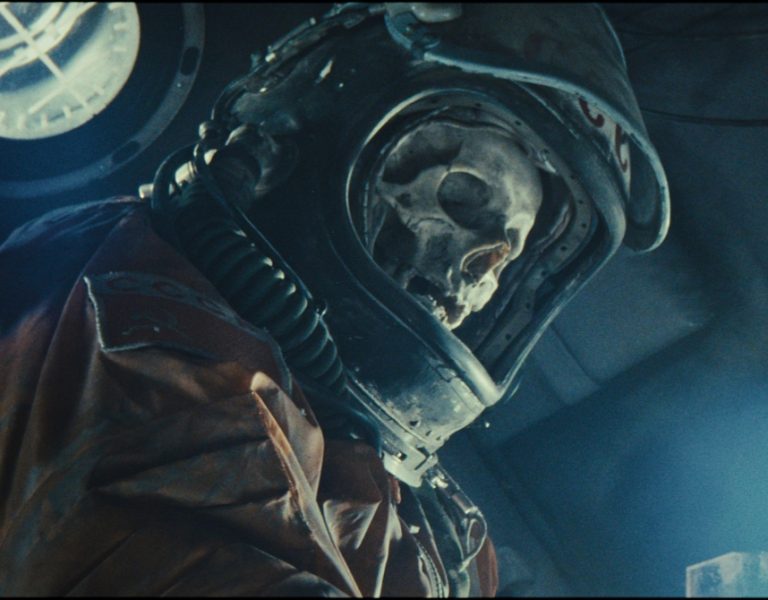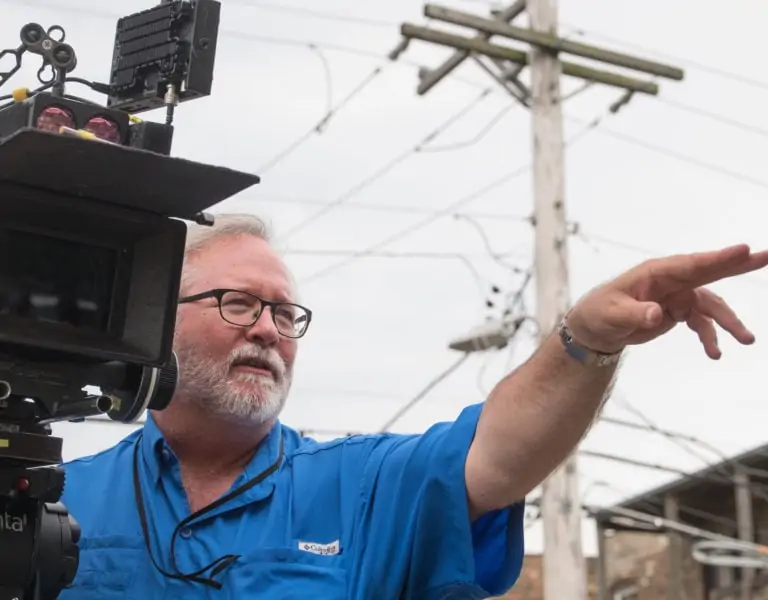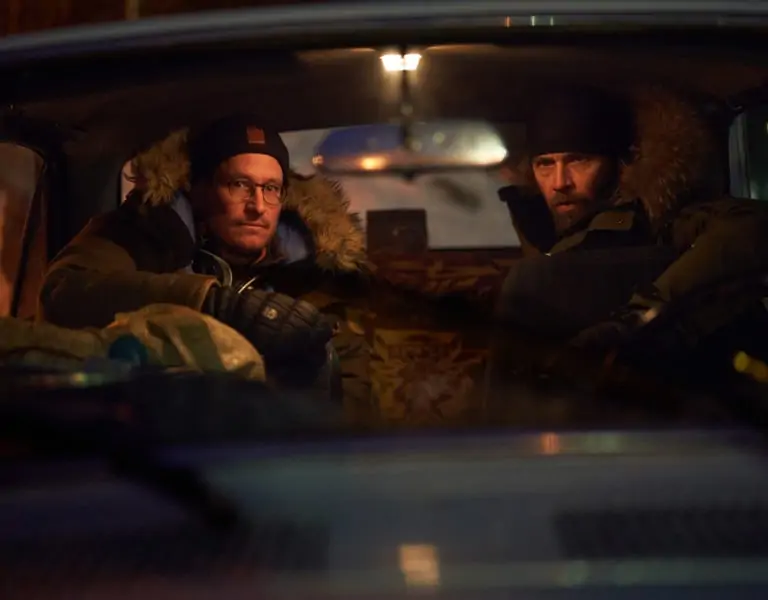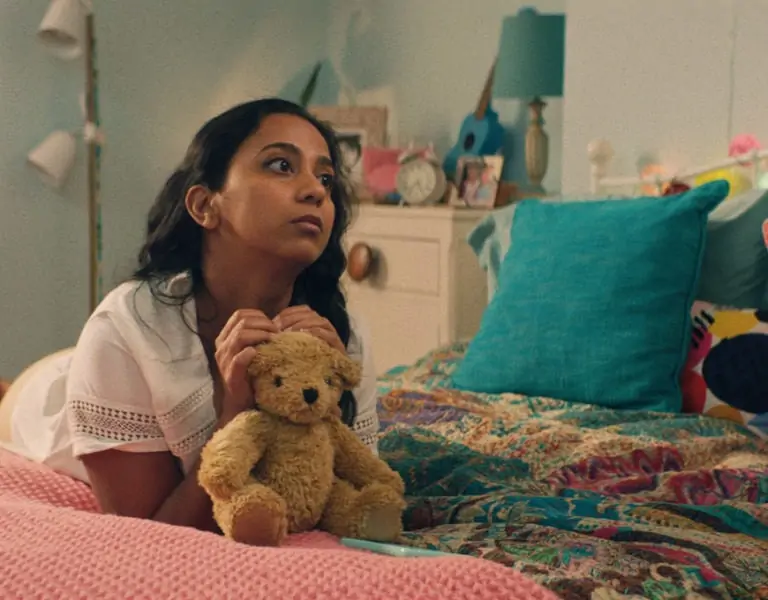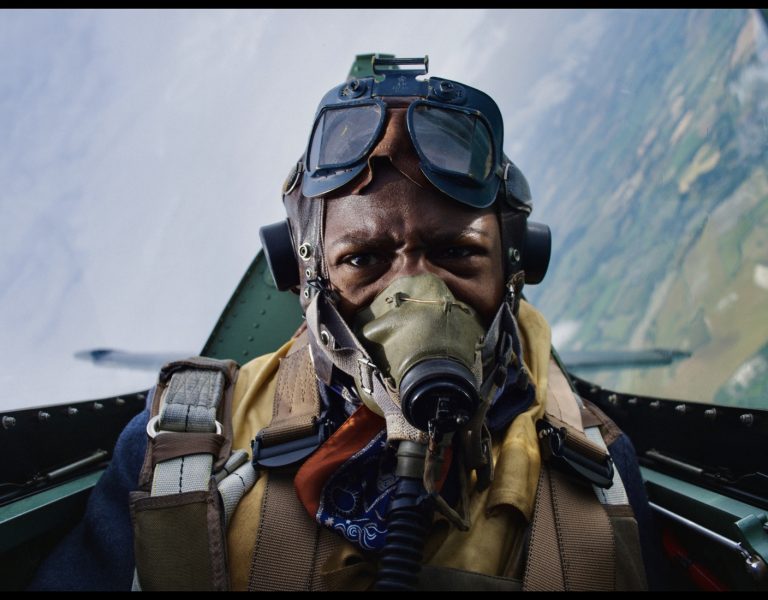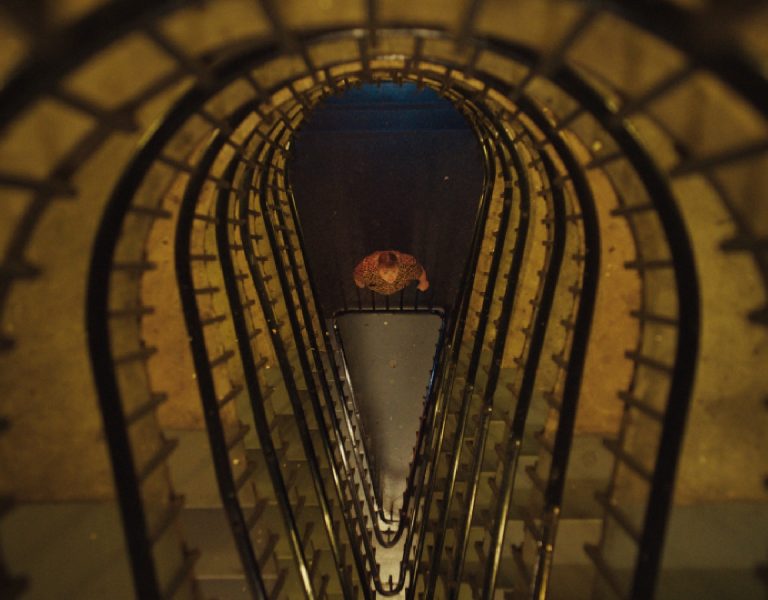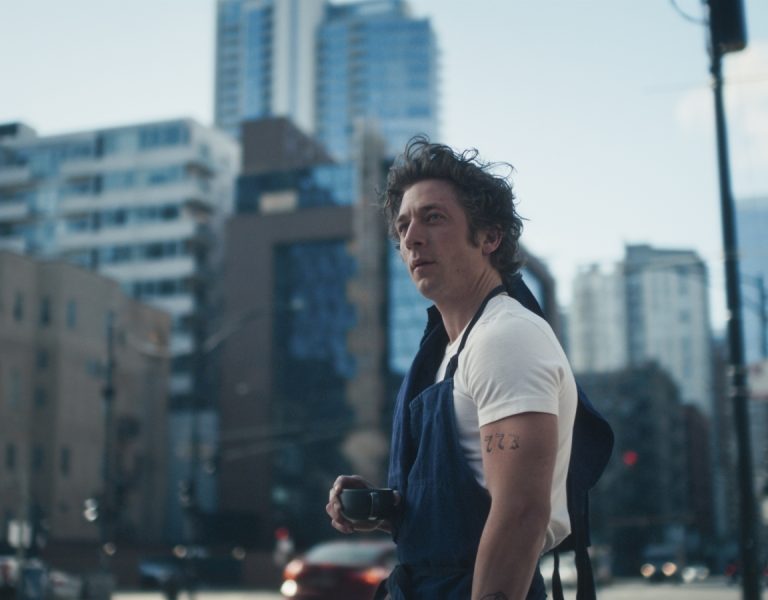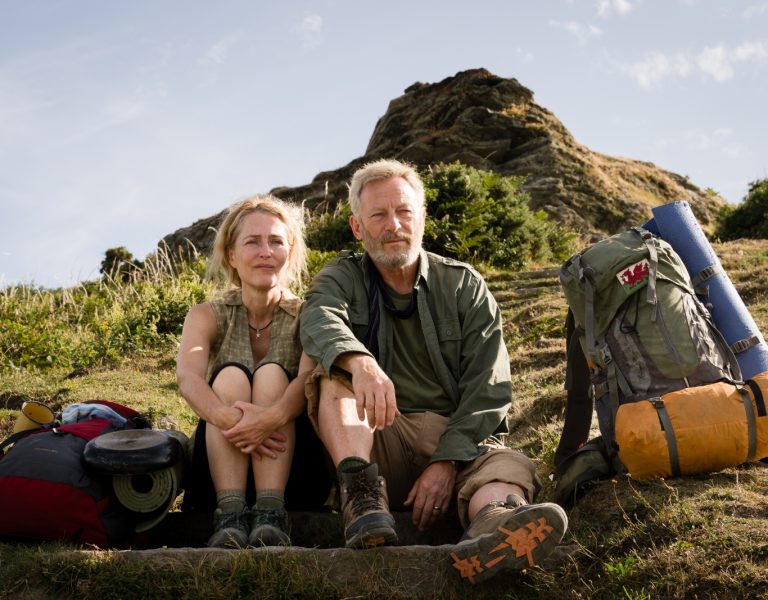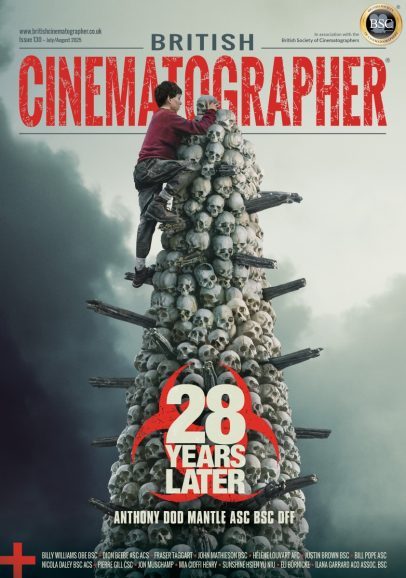From orange-chocolate cravings to single-take spectacles, cinematographers reflect on their Emmy-nominated work, visual ambition and the collaborative spirit behind the lens.
Summer is not much given over to languors anymore, with the world as it is. Though even if it were, the culmination of Emmy season would march forward, regardless. So we’re here to mark that still-familiar tradition in the company of nominees. Lots of nominees! All kind enough to check in. Though lest any future Hollywood seasons be forgotten, we hear from one of the newest inductees to the motion picture Academy’s cinematography branch, too.
But to recapture at least some sense of a sultry afternoon, let’s pause to consider Jaffa Cakes. Yes! We do indeed mean those orange and chocolate treats, usually harder to find on this side of the pond, but precisely what was dancing on the mind’s tastebuds of Matthew Lewis BSC, when he suddenly found out he’d been nominated for his work on episode two of Adolescence, the hit Netflix series that starkly reminds that what had been thought to be the languors of childhood are increasingly, if not irretrievably, in our collective rearview mirror now, in this agitated present. That series is also where the Boiling Point cinematographer got to perfect the art of storytelling in single take episodes, in his latest collaboration with director Phillip Barantini and series co-creator (and lead actor) Stephen Graham. Both of whom are also nominated for the heavily lauded show.
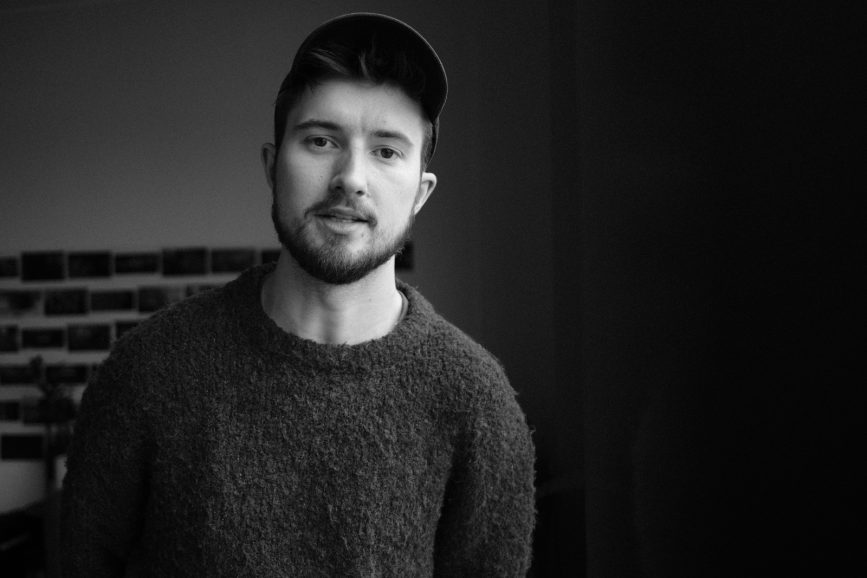
Lewis says that finding out about his own nomination “was such a surreal feeling. I had completely forgot the announcement was due. I was on my way to a recce (i.e. scouting) and trying to pay for fuel and Jaffa Cakes when all these calls start coming through. I had to keep apologising to the cashier! What an honour to be recognised at this level and amongst such a talented field. Never in a million years did I think people would connect so much with the cinematography of this show and it’s been a privilege to experience. Thank you thank you thank you!”
ONE-SHOT WONDERS
“Oners” are definitely a motif in this year’s Emmy nods. Over on the comedy side, The Studio was this year’s most heavily nominated show. The Apple TV+ series follows in the tradition of Hollywood gazing starkly in the mirror (or perhaps through the viewfinder) at itself, in a tradition that includes Sunset Boulevard, The Player and recent streaming series like The Franchise.
The show itself is nominated, as are numerous Hollywood luminaries, like Martin Scorsese and Ron Howard, in the guest star category – for playing themselves. Which somehow seems even more Hollywood.
Cinematographer Adam Newport-Berra’s nomination came in the second episode, called – yes! – “The Oner,” wherein beleaguered, I-would-really-like-to-be-a-good-guy studio chief Matt Remick (played by also-nominated series co-creator Seth Rogen, who co-directed the episode with fellow co-creator – a lot of cooperation went into the show! – Evan Goldberg). In it, Remick plans an unasked for set visit to watch a shot – a oner – being done by director Sarah Polley.
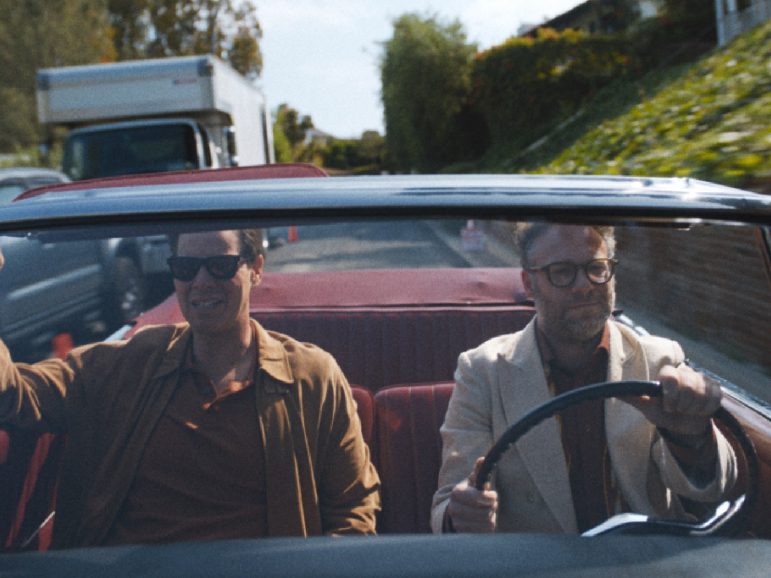
En route, he chats about some of the great “single takes” in film history, including Orson Welles’ opening to Touch of Evil and Soviet filmmaker (for indeed, Russia was the USSR then) Mikhail Kalatozov’s also spectacular street funeral-to-third-story cigar factory-to-overhead-the -procession shot in Soy Cuba.
For Newport-Berra, “Kalatozov was a major inspiration for me throughout the entire season,” as seamless, cross-studio tracking shots also pop up in other episodes. “The way Kalatozov is able to move the camera in films like The Cranes are Flying or Soy Cuba is just extraordinary, and in that time period, with massive cameras no less. It gave me the courage to take big swings and made it clear that anything was possible. What really inspires me most about Kalatozov is his commitment to people and faces. His shots were often a spectacle, but they were always motivated by and grounded in an emotional human journey.”
To construct their own extraordinary “single take” story, “we spent as much time as we could on location ahead of our shoot (which amounted to maybe only 4-6 hours total). Seth, Evan, the writers and I walked the location with script in hand and just started to plod through it, and I would film everything with an iPhone. We’d stop and start scenes, editing along the way until we came up with a general blocking we could present to the actors. It was important that the cast had a framework to work within.”
There’s also a literal frame – in the form of on-set monitors – through which we glimpse the “oner” that Polley is attempting to pull off (though Rogen’s character predictably keeps mucking it up). “We made sure to make the film with the show feel different,” Newport-Berra says. “The main technical choice was shooting on old anamorphic glass and framing for 2.40. We shot these movie elements earlier in the day when evening light didn’t feel as crucial. While shooting the scenes for the real world of The Studio, we shot the monitors with greenscreen so we could comp that footage into the edit, and use it as stitch points.”
All the pieces of the show’s quiltwork are shot “on the ARRI Alexa 35 with a single 21mm Zeiss/ARRI Master Prime. The films within the show were also shot on the Alexa35, but with Panavision Anamorphic C and E series lenses.”
ARRI 35s also played a role in recreating another kind of history – from a previous time where a decades-long cold civil war finally erupted into a hot one.
It’s the “Prelude” episode, the opener to this final season of The Righteous Gemstones, the HBO dramedy about the successful family of televangelists who take a generously revisionist approach when applying Biblical edicts to themselves.
“Prelude” is a mini historical epic, showing viewers how family patriarch Elijah Gemstone – played by Bradley Cooper – arrived at his own foundational “come to Jesus” moment, after a life spent, up to that point, in robbery, card sharking, and casual murder.

It’s much more “dram” than “edy,” and is astonishingly rich for its 40ish minute runtime. Cinematographer Paul Daley had worked earlier with episode director – and Gemstones creator – Danny McBride when the latter was rebooting, and wrapping up, the storied Halloween franchise, where Daley operated. Though some horror film DNA is apparent with Cooper’s first entrance, rising from the back of some church pews, ahead of the episode’s first robbery. And killing.
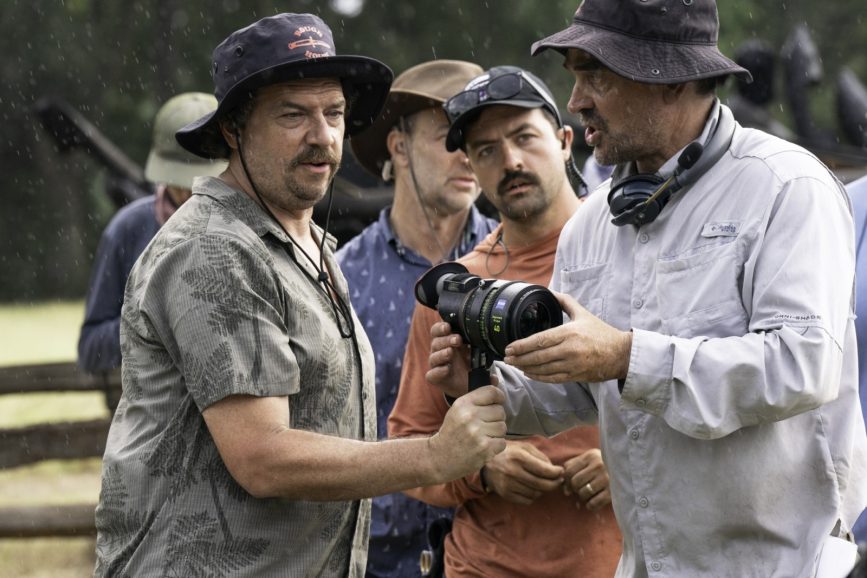
But the other DNA comes from the Civil War photography of Mathew Brady (along with films like Glory and The Outlaw Josey Wales). “I leaned heavily into those silver nitrate prints,” Daley says of the pictures, which here are quick, interpolated portraits of various soldiers fated to die soon in battle. Daley “built a black box to put these people in,” then proceeded to grab background actors and “messed their hair and scrubbed dirt on them.” The South Carolina locales were “blazing hot (with) high humidity,” and the actors had “been outside all day (and) looked like they were beat to shit.” Meaning they were essentially “camera ready” for their contemporaneous portraiture though Daley is also quick to add “the wardrobe is absolutely everything. The (pre-fab) uniforms weren’t right, so they made the uniforms,” he says of Christina Flannery’s costume department, including “all the leather satchels. The testament to that is me grabbing people randomly,” knowing they’d be camera-ready.
Another testament would be Flannery’s own nomination for a different Gemstones episode this year. As for “Prelude,” it also includes a long march through the woods, which goes fatally awry, a sequence “very military-esque in its planning,” with some 2 – 300 feet of “dolly track through the woods,” and an always-restless camera, helping to visually underscore the idea that in wartime, any “next move” could be someone’s last.
“The camera never stopped moving,” Daley said. “It was on everything we had: Cranes, Steadicams,” even inside one of the wagons moving just ahead of Cooper, on the march. In post, the footage was given a “a bleach bypass,” a technique originally “from the old 35 mm days,” which let them “put in in 35 mm grain, then backed it out. What the bleach bypass did was allow us to hold our highlights, hold our lowlights, but lose our mids.” Of course the process was digital, though Daley has been looking for an ever-more filmic look for the series, having “ditched the LFs,” in favour of ARRI 35s, which he operates with “two sets of Primes. But if I ran into trouble I’d break out the Leicas.”
He could also break into a discussion with McBride, too, who is “a Civil War historian – he knows the tactics, he knows the Generals, he knows his stuff.” Those conversations with the director were something that Jessica Lee Gagné, double-nominated for Apple TV+’s hit series Severance, both as DP in the series opener, “Hello Ms. Cobel,” then a few episodes later, in the memory play “Chikai Bardo,” as director, found herself missing in the latter episode.
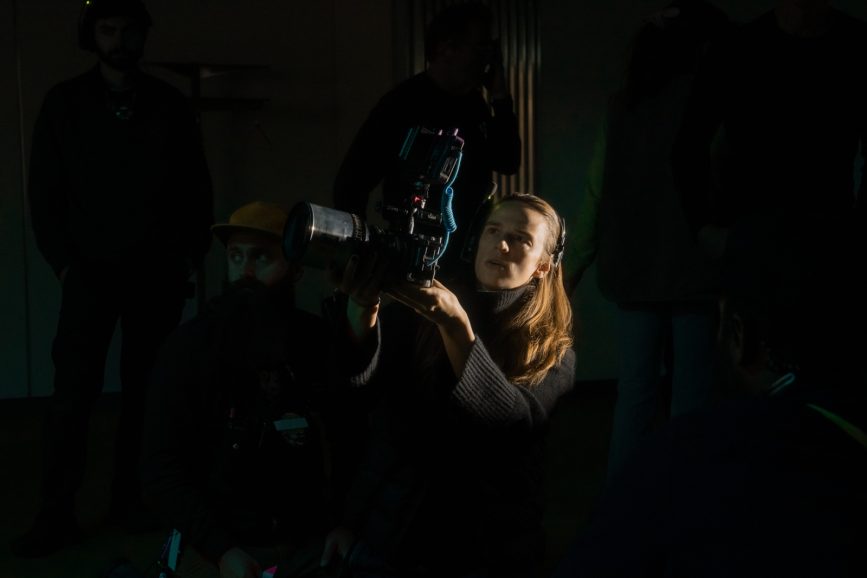
In the case of “Bardo,” that was because she was still the DP! “What’s interesting,” she told us, is that “you really understand what you do as a DP when you direct for yourself […] When you’re DPing and directing – no one’s validating your choices in that sense.” Which is to say, the sense of being able to bounce an idea off a collaborator. She still “needed someone to tell – yeah, you need that,” so found herself “having that conversation with the script supervisor – I leaned into her more.”
Though there were times in that episode Gagné did get to be “just” the director: There are flashback sequences, where characters continue to go through painful “reintegration,” in this series whose premise is essentially “all work and no play make Jack a bifurcated boy.” Or a severed one, with “Jack” being lead character Mark Scout, played by Adam Scott, who, in the “Bardo” episode struggles to remember, and make peace with, memories of his lost love with Dichen Lachman’s Gemma – and vice versa.
“The flashbacks were shot by another cinematographer because they were shot on film,” that being Max Goldman, who Gagné says “was so cool, he knew where I was coming from.”
In part, that was in establishing a look with a Venice 2 – having moved on from the first Venice in the first season – with C-Series Panavision glass, “tweaked” by the inestimable Dan Sasaski at Panavision, as “core components.”
Of course, for “Bardo’s” flashback sequences, that “core” also included two-perf film stock shot on ARRIs, with “ four perf for the time lapses,” and even a trusty film school Bolex, running 16mm Ektachrome “for the time lapse,” which was then “rewound in-camera,” for fades and memory and time-lapse moments.
Which makes it sound like kind of a coin toss which episode might have garnered a cinematography nod. But the one that did, certainly started out with a bang – another apparent oner, with a business-suited Scott running ceaselessly, frantically, though the clinically-lit hallways of the Lumon Industries building he’s trapped in.
That episode was done in conjunction with executive producer Ben Stiller, a frequent director on the series, and indeed, the season’s opening “idea came from Ben. [The sequence is] over 13 -16 shots. There’s stitches in there,” but to get them to come together seamlessly, “Ben and I mapped it out on the stages – the parkour (Adam) would have – which hallways we were going to use.”
That entire process – the collaboration and working things out – “[is] what excites me the most
Gagné says. “ I try to wrangle anyone as much as possible,” referring to “a laborious testing phase” when determining the look of an episode, or a season. “That goes for costume and props [too] – actually setting up situations, to see how it was lit.” Or how actors would move – or run – in them.
“It segues,” she concludes “ nicely to directing.” Clearly the TV Academy has agreed.
And as our award season conversations stretch out beyond DPs to those other collaborators that make a show successful, we also heard from The Last of Us editor Timothy Good ACE, a previous Emmy winner for the so-far-and-yet-so-near apocalyptic series, nominated again this year for the “Through the Valley” episode. We asked about the previous conversation between co-showrunner Neil Druckmann, who was also co-creator of the game, along with (mystifyingly unnominated) DP Ksenia Sereda, where he said that in some senses, the game served as “the most expensive previs ever made,” for the series.
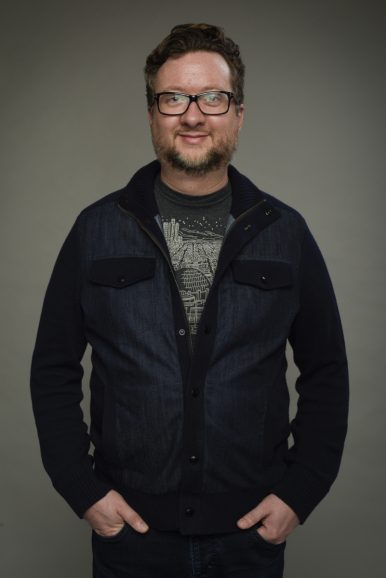
To which Good replied in an email that the comment “makes sense […] in terms of set design, camera angles, costumes, and other aspects of production, but as the editor, I purposely did not watch the cut scenes [in the game] when it came to pacing and editorial decisions because I feared that I might subconsciously recreate a carbon copy of what I saw. I wanted to experience the spaces and performances that were created bespoke for the series and build a world around that for an audience that may not know how the game unfolds. The beauty of working with this strategy was that [series co-creator] Craig [Mazin] and Neil were presented with a new vision for each scene and then would guide me toward certain adjustments that honoured the game as well, resulting in a version that felt both fresh and resonant at the same time.”
Also not hewing to what came before was Erik Messerschmidt ASC, a previous Oscar winner in collaboration with director David Fincher, for Mank, and an Emmy nominee for Fincher’s serial killer series, Mindhunter.
This year, however, he finds himself nominated as Outstanding Technical Direction and Camerawork for a Special, for Apple TV+’s Bono: Stories of Surrender, which he describes as “part documentary, part concert film and part intimate portrait,” of the U2 frontman.
Though the “documentary” part didn’t take cues from any previous well known rock docs – even though Messerschmidt calls docs in general “in some regards it’s the most authentic form of filmmaking.” In this case, they “wanted our film to be different from most concert films,” as they were adapting Bono’s stage show, and “a large portion of the film was done very intimately. [Director] Andrew [Dominik] and I shot much of the footage of Bono on stage without an audience, allowing us to capture him close-up in ways typically not practical with conventional films. That footage was then intercut with live show performance pieces with the intention for it to be editorially seamless.
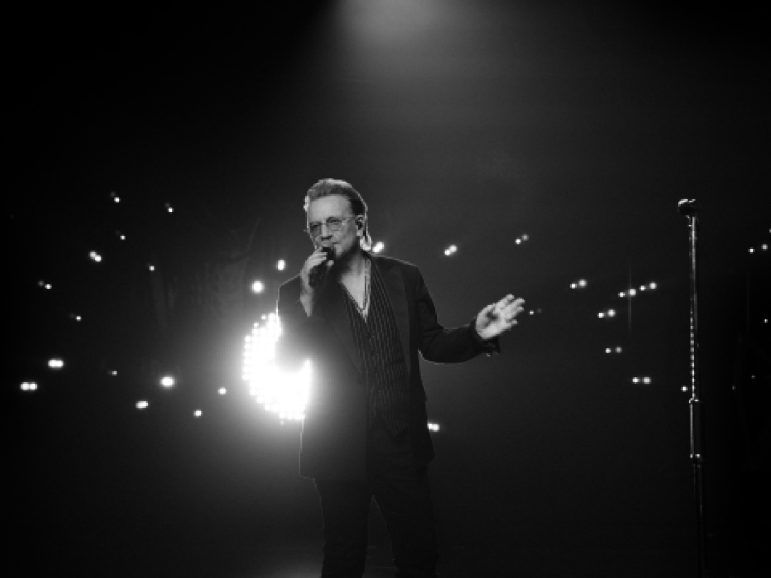
“The technical direction portion of the film was therefore twofold: the design andengineering of the LED display behind Bono integrated with specific camera direction and execution, and the precise shot listing and design of the portions that could be shot without an audience and those pieces that did.”
Messerschmidt, while credited as the film’s DP, shares his nomination with a crew of seven other camera folk, and emphasizes that “in any filmmaking endeavor you are only as strong as your crew. The wonderful thing about this specific group of people was they immediately understood what our visual rules were and how to best support Andrew’s vision for the film. In most cases, particularly the live work, we only had one or two chances in capturing the performance so everyone had to be on their toes looking for the best shots.”
Also generous with crew praise is Pachinko’s nominated DP, Ante Cheng , who says of the (also Apple TV+) multi-generational historical drama, “I believe my work is only as good as my worst shot and only as strong as my crew. I am immensely grateful to our team for sustaining such a high level of quality over eight months of filming across two countries. And for the core memories we made along the way.”
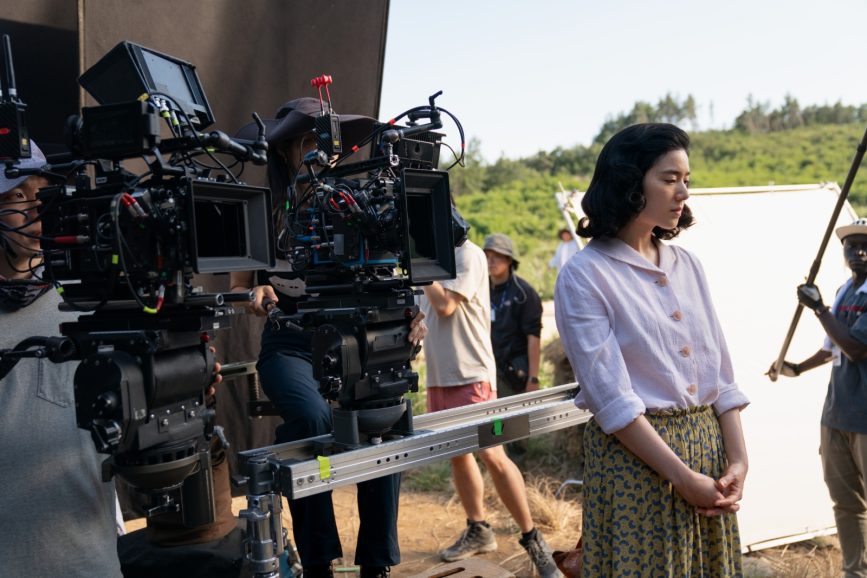
Cheng generously listed them all in an email – from A Cam Operators Mike Heathcote and Mike Carr all the way through to B Dolly Grip Mark Berdock, and everyone in between (looking at you, Lighting Console Op Desiree Lidon!), and it is only because we are already into “overtime” on column length, in this awards-eve king n’ queen-sized edition, that we don’t list them here too.
Cheng’s praise for collaboration includes showrunner Soo Hugh, as they “pushed ourselves to build upon and elevate the visuals from the first season. The story spans three distinct periods in Japan—the 1940s, 1950s, and 1980s. Our production took us from a Toronto winter to a South Korean summer, working with dialogue in Korean, Japanese, and English.”
Shooting on an Alexa 35, “we designed three sets of lenses as a unique and subtle way to distinguish,” histories. For the World War II era scenes – especially prominent in the nominated Chapter Nine – “Alex Nelson at Zero Optic rehoused my personal favorite set of 1950s Leica M Summicron lenses. The legendary 35, 50, and 90mm that were originally introduced with the Leica M3 camera.” Panavision’s Sasaki also “custom-tuned VA spherical lenses for the post-war rebuild period and T series anamorphic lenses for the economic boom of the ’80s.
“We used a single show LUT designed by [colorist] Joe Gawler to be reminiscent of discontinued Fuji film stocks. We chose a 2:1 aspect ratio to match the dimensions of traditional Japanese tatami mats. As these mats are essential elements in Japanese interiors, this ratio allowed our compositions to align perfectly with the architecture.”
The show’s production designer, Ruth Ammon, was also nominated for its thirteenth episode, and “designed elaborate interior and exterior sets on stage. These sets allowed us to see the outside world through doors and windows, and our lighting setup gave us the control to recreate any time of day or weather condition.”
LENS AND SENSIBILITY
Ways of seeing are also key to our final correspondent this time out, cinematographer Valentina Caniglia CCS, who was one of the just-over 500 new invitees into AMPAS membership earlier this summer.
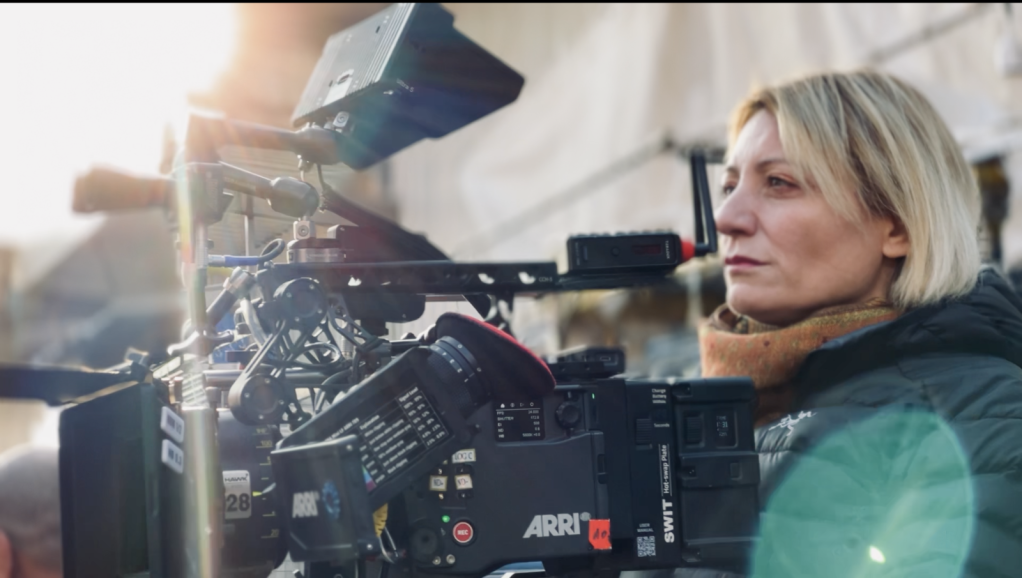
The busy international DP wrote to say she felt “deeply honoured and grateful to be invited to be a member of the Academy of Motion Picture Arts and Sciences. This is an incredible institution with so many talents involved, the ones who inspired me so much and contributed to being the reason why I am a cinematographer. In my opinion, the history […] and the work honored by the Academy is the light that shines on the visual emotions that we create, to have people dream, breathe and live through the movies.”
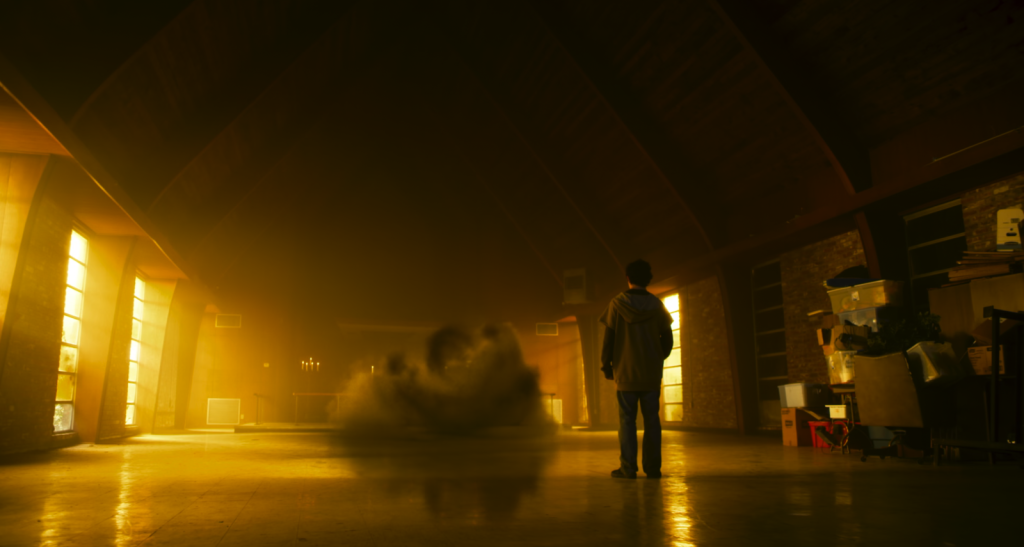
And as we’ve seen this Emmy season, through some of their favorite shows, too – where the DPs, cast, crew – and certainly the gear – are usually indistinguishable from the feature side.
That season culminates with “the envelope(s), please” in just a couple of weeks. And we’ll be back to tell you whose names were in them and what they said afterwards, when we see you next month.
‘Til then. acrossthepondBC@gmail.com / @TricksterInk

